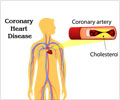A report in the Journal of the American Heart Association says that heart attack patients residing outside cities, received lifesaving treatment much quicker when hospitals
A report in the Journal of the American Heart Association says that heart attack patients residing outside cities, received lifesaving treatment much quicker when hospitals and communities worked together to get them to suitable hospitals.
They used an integrated, rapid transfer system to get patients to a facility equipped to perform artery-opening procedures.“A heart attack is a true medical emergency, where every 20 to 30 minute delay could impact whether your patient lives or dies,” said Henry Ting, M.D., lead author of the study and a cardiologist at Mayo Clinic in Rochester, Minn., who coordinates quality improvement efforts for cardiology services.
Saint Marys Hospital in Rochester is part of the Mayo Clinic. It houses a 24-hour, seven-day-a-week cardiac catheterization lab, which means the facility is fully equipped to handle emergency angioplasty, also known as percutaneous coronary intervention (PCI), to open blocked coronary arteries in the quickest way possible. Twenty-eight hospitals across three states in the region don’t have this capability, so heart attack patients are sent to Saint Marys Hospital for treatment.
Ting and his colleagues implemented and evaluated a protocol, called the “Fast Track”, for patients of Saint Marys Hospital or for those of 28 surrounding hospitals in the region as far as 150 miles away who were transferred to Saint Marys Hospital in a cardiac emergency.
“We mapped the processes of care and eliminated redundant steps that added no value from the perspective of the heart attack patient,” Ting said. “From there, we implemented and evaluated the regional system of care, striving to coordinate and integrate how to deliver the best and fastest reperfusion therapy to open up an occluded coronary artery.”
A major heart attack is when a complete blockage occurs in a coronary artery. This is called an ST-elevation myocardial infarction (STEMI). Treatment for STEMI patients includes either emergency angioplasty (a tiny wire is inserted into the blocked artery and a balloon and/or stent is used to re-open the coronary artery) or injection of a clot-busting drug.
Advertisement
The study showed that Mayo Clinic treated 597 consecutive patients from May 2004 to December 2006. There were three groups of study subjects. Group A included 258 patients who arrived at Saint Marys Hospital and were treated with primary angioplasty.
The Mayo’s “Fast Track” STEMI protocol decreased the median door-to-balloon time at Saint Marys Hospital (Group A) from 90 minutes to 71 minutes (21 percent improvement), with 75 percent of patients receiving it in less than 90 minutes. For patients from the regional hospitals (Group B), median door-to-balloon time was 116 minutes — including an average 57 minutes for transferring the patient from the regional hospital to Saint Marys Hospital.
Twelve percent of Group B patients received angioplasty in less than 90 minutes. Door-to-needle time for patients receiving clot-busting therapy at the regional hospital was 25 minutes, with 70 percent of patients receiving treatment in less than 30 minutes. The Saint Marys Hospital STEMI protocol, adopted in May 2004, includes five strategies:
* All patients with suspected heart attack get a 12-lead electrocardiogram, which a physician interprets within 10 minutes of their hospital arrival.
* The emergency department staff activates the cardiac catheterization lab without waiting for review or approval by a cardiologist.
* A single-call system activates the entire cardiac catheterization team.
* The catheterization lab is fully operational within 30 minutes of activation.
* Staff collect data using a computerized, Web-based database with feedback provided to staff within 24–48 hours.
Staff implemented the regional STEMI protocol in December 2004 at 28 hospitals in Minnesota, Wisconsin and Iowa – 12 from the Mayo Health System and 16 independent hospitals. The regional protocol included the five strategies adopted at Saint Marys Hospital, plus an additional five:
* A standardized selection protocol was developed for choosing clot-busting therapy or PCI as primary therapy to restore blood flow to the heart.
* A single phone call system allows receiving cardiologist (at Saint Marys Hospital) and regional physician to discuss case, activate helicopter transfer and activate the catheterization team.
* A central communication center selected the fastest mode of transfer from three helicopters and ground ambulances, with dispatchers looped into the patient care team.
* The air ambulance transport team developed an innovative “hot load” procedure – helicopter engine is left on and time to pick up a patient from landing to take-off is less than 10 minutes – similar to a Mobile Army Surgical Hospital (MASH) unit.
* Saint Marys Hospital emergency department evaluation was bypassed, with patients delivered straight to the catheterization lab, rather than being re-evaluated by on-site staff.
“We did not simply transfer every heart attack patient for angioplasty,” Ting said. “We wanted to organize a system of care that would deliver the best appropriate therapy according to guidelines to get the right patient to the right hospital with the right treatment.”
Source-Eurekalert
LIN/B











